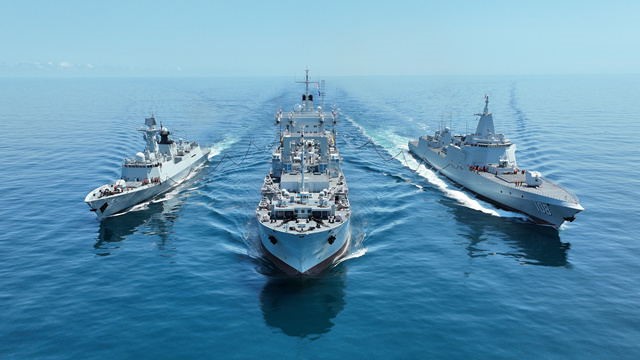The Pentagon has released its annual analysis of China’s military power and strategy. The report should deeply concern America and its allies.
A senior defense official, speaking on background, noted that “The People’s Republic of China is continuing its efforts to overturn the international rules-based order and is building an increasingly effective military to further these aims…Communist leaders seek “the great rejuvenation of the Chinese nation,” by 2049 – the 100th anniversary of the Chinese Communist Party’s takeover of the world’s largest country.”
The report discusses the lack of contacts between U.S. and Chinese defense officials. “The PLA’s refusal to engage in military-to-military communications with the United States, combined with the PLA’s increasingly coercive and risky operational behavior, raises the risk of an operational incident or miscalculation spiraling into crisis or conflict,” according to the Pentagon.
Particularly troubling is China’s deepening security ties with Russia. Recently, China’s dictator Xi met with Putin, and the two emphasized their strong alliance and intertwined foreign policies.
China is engaging in growing military coercion, according to the official. One specific example is the increasing numbers of unsafe intercepts of U.S., allied and partner vessels and aircraft operating in international air and seaways of the Indo-Pacific region. “Between the fall of 2021 and the fall of 2023, the United States documented over 180 instances of coercive and risky air intercepts against U.S. aircraft in the region,” the official said. When allies and partners are included, this jumps to more than 300 instances.”
China is intensifying its pressure campaign against Taiwan, including Chinese ballistic missile overflights of Taiwan, increased flights into Taiwan’s self-declared air defense identification zone and the large-scale simulated joint blockade and simulated joint firepower strike operations done after a visit to the island by a U.S. congressional delegation.
The focus of the report is China’s military’s vast and rapidly growing nuclear, space and cyberspace capabilities. “We see the PRC continuing to quite rapidly modernize and diversify and expand its nuclear forces…They are expanding and investing in their land, sea and air-based nuclear delivery platforms, as well as the infrastructure that’s required to support this” the Department official said.
China now has more than 500 operational nuclear warheads, a rate of growth greater than anticipated by Western observers.
China is developing new intercontinental ballistic missiles. Beijing has the capability of reaching any American homeland target.
On the land, the PLA continues to modernize its equipment and focus on combined arms and joint training, the official said. The Chinese military is still a conscript force with two intakes a year. The military is working to field long-range fires and incorporate the capability into their doctrine.
At sea, China has the world’s largest navy with a battle force of more than 370 ships and submarines. The Chinese launched their third aircraft carrier in the past year and commissioned their third amphibious assault ship.
The PLA Air Force “is rapidly catching up to western air forces,” the official said. The air force continues to build up manned and unmanned aircraft and the Chinese announced the fielding of the H-6N – its first nuclear-capable, air-to-air refueled bomber.
The Chinese military has not been involved in a shooting war since 1979 and “this actually is one of the shortcomings that the PRC highlights and a lot of their own self assessments,” the official said. “They tried to address that, I think, by attempting to make their training and their exercises more realistic, to more closely approximate … actual combat type conditions.
“I think they tried to address it as well, by learning whatever lessons they can from other countries’ involvement in military conflicts,” he continued.
Chinese military leaders carefully studied military conflicts involving U.S. forces, Russian forces and others over the years. That is one of the key sources they draw upon to better understand how they need to prepare themselves for future combat operations. “Certainly, they’re watching very closely Russia’s war of aggression in Ukraine,” the official said.
The Chinese military is looking for bases overseas and looking to develop the resources needed to be a globally relevant force. They have established an overall logistics command and they are working hand-in-glove with the Belt and Road Initiative to gain access.
Photo: Chinese warship undergoing at-sea resupply, an indication of the increasingly global reach of Beijing’s massive military might. (China Defence Ministry)
